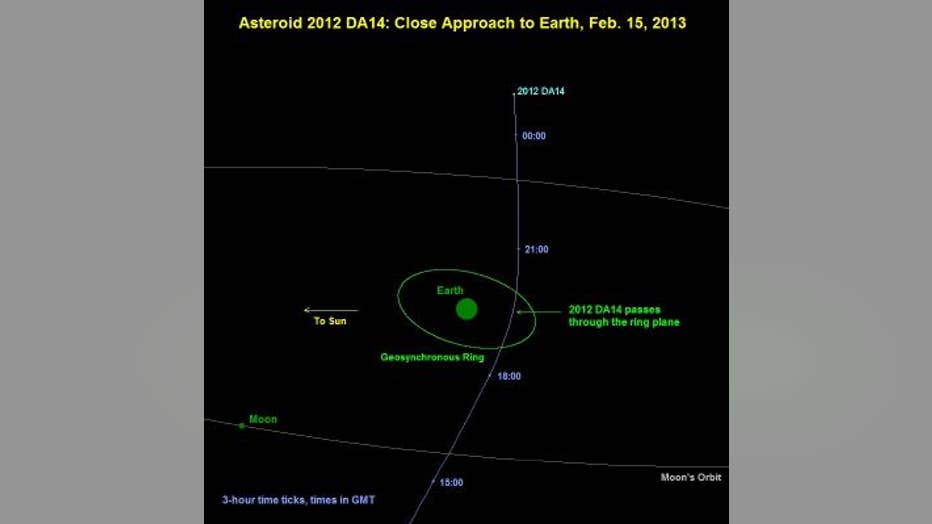Earth about to get a close shave from space
This Friday you can go about your business and not worry about a giant asteroid colliding with earth and ruining your day (along with everyone else’s). Unlike the movie “Armageddon” there will be no need to blast Bruce Willis and Ben Affleck into space with a nuclear bomb to demolish the incoming celestial bullet, though in reality such a blast would actually make it worse. While this flying rock will miss earth, scientists have a chance to use the close encounter to learn a few things.
Known as 2012 DA14 the 45-50 meter wide rock (just an estimate since it's not close enough for a good head shot yet) will leave a cushion of about 17,200 miles at its closest point to earth Friday afternoon. This distance less than 1/10th the distance to the moon. It is also closer than geostationary satellites orbiting the planet such as the ones taking pictures of cloud cover we show on the news every day/night.

2012 DA14 passing within the ring of orbiting satellites. Credit: NASA
Since 2012 DA14 makes its flyover Friday afternoon around 1:24pmCST, we won’t have a chance to see it. Folks in parts of Africa, Australia, Asia, Europe, and Antarctica will be able to catch a view with the help of good binoculars or a telescope (at its brightest magnitude it will be just dimmer than what the naked eye can pick up). Meanwhile scientists will use an array of instruments to learn more about the asteroid and other space rocks like it.
At nearly ½ the length of a football field, 2012 DA14 is roughly the size of the asteroid that struck Siberia in 1908, a collision known as the Tunguska Event. The power of that event, believed to about 10-15 megatons of TNT is as strong as the largest nuclear weapon (Castle Bravo) ever tested by the United States and a little less than ½ the power of the former Soviet Union’s biggest bomb (Tsar Bomba). So while the path of 2012 DA14 will keep it at a safe distance, it’s fair to say this is a very close call from an object capable of cataclysmic damage to a large (but not global) area. NASA’s Jet Propulsion Laboratory estimates a rock this size passes this close to the planet about once every 4 decades with an impact around once every 1,200 years.
If you’re interested in seeing the flyby, SPACE.com will show footage from telescopes around the world. Check it out Friday afternoon around 1:20 to 1:30pm.

